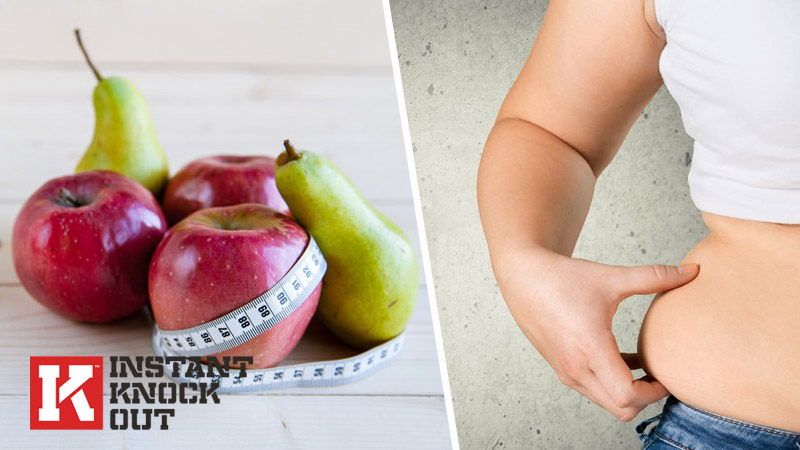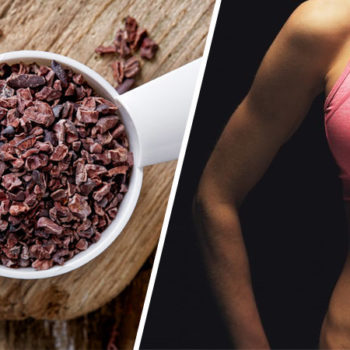Where Will You Lose Fat First?

In the quest to achieve fat loss many of you will have particular areas where you really want to focus on. You’ve tried pretty much everything and feel like giving up.
But is there even a specific order for fat loss or are you at mercy of chance? In this article we’ll take a look at the science behind weight gain and loss and give you the best ways to maximize your body composition gains.
Two Types of Fat
When you are gearing up for a fat loss program it is important to understand the different types of fat.
Fat cells are called adipocytes. They can be stored throughout the body, both on top of the muscle and underneath it. Some people tend to store them in certain areas of their body, which is largely controlled by genetics.
Cells that lie just under the skin are called subcutaneous adipocytes. These are the ones that you might find on the backs of your arms, across your butt or around your thighs.
Visceral adipocytes build up much deeper and are deposited around your internal organs – it’s what we refer to as belly fat. These cells are much more likely to cause you harm in the long term as they increase the risk of metabolic illness such as diabetes, high cholesterol and heart disease.
There are two main types of functional adipocytes – white cells and brown cells [1]. Your brown cells respond better to metabolic changes. Whilst white adipocytes store calories, brown adipocytes help you to burn fat for energy, as they contain large amounts of specialist adipocyte-busting cells called mitochondria.
There’s evidence that these types of adipose cells differ metabolically too. And this might effect how they respond to a weight loss diet.
Those who have lower overall body adiposity tend to have higher numbers of brown cells and it appears that they help to regulate body weight and boost your fat burning potential. Those that have higher adiposity levels have much more white cells.
Body Shape and Fat Gain
Depending on whether or not your adipose cells are more subcutaneous or visceral will affect your overall body shape.
Whilst everyone is different, storage of these cells can be very individual. There are two major body shapes – pear and apple.
Pear shaped bodies tend to store white fat around the butt and thighs, and less around the middle. This gives a silhouette shape that is narrow at the top and wider at the bottom, like a pear.
This shape is common in females as female reproductive hormones such as estrogen control where fat is deposited. Estrogen is key for reproduction so it makes sense to store it around the hips. Interestingly though, as females reach menopause their potential to store fat in their middle instead of their hips goes up by 42% and metabolic disease risk by 60% [2].
Although many women are not happy with a pear shape, fat cells collect subcutaneously therefore don’t pose any immediate health concern.
Apple shapes are more likely in males and is characterized by a fatter waist and chest, along with narrower hips. Belly fat storage tends to be visceral, therefore can have bigger implications for long-term health. It collects inside the peritoneal cavity, compresses blood flow to vital organs and can also escape into circulation too.
When you take in too many calories, your body will want to store them at these specific sites. If you are a female of menstruating age chances are you’ll add fat around your hips. If you’re male then it’ll probably store on your belly or chest.
The Ethnic Effect
Whilst gender plays an important part in where you store adipose tissue, it appears that ethnicity does too.
There’s a lot of evidence to show that Chinese and South Asians have higher levels of visceral adipocytes in comparison to Europeans [3]. That’s at all body fat levels too.
Black women tend to have lower visceral adiposity than white women but Hispanic women come out top for belly fat storage [4].
Can You Choose Where You Lose Fat?
The short answer is no. But there is a bit more to it than that.
In a perfect world you’d be able to choose exactly where you wanted to lose weight – a process called targeting or spot reduction. You’d do a few sit-ups and your belly would disappear. You’d do a few squats and the fat would melt off of your butt.
It’d be a little bit like the artist using clay to shape and carve out the best physique possible.
But unfortunately it doesn’t work like that. You just can’t choose where you lose weight from.
There are very small bits of research around that suggest reductions in adipose cells can be influenced by increasing blood flow to the adjacent muscle – a process called adipose tissue blood flow, or ATBF [5].
In reality though this isn’t anything to get excited about. It’s interesting maybe, but nothing more than that.
There is still a massive amount of research suggesting that no matter what exercise you perform, you can’t target where you lose inches from.
In fact, the American Council on Exercise still maintain their stance on spot reduction. They suggest that not only is targeted weight loss unachievable, but it can also neglect a more comprehensive and holistic approach to exercise too.
Recent Fat Will Be Lost First
So that leads on to looking at how you lose fat. As we’ve already mentioned, there are so many factors that affect adiposity such as race and gender, so there’s certainly no one size fits all approach.
For most people though, fat loss tends to go from the most recent place it appeared.
If you’ve all-of-a-sudden put a bit of weight on your hips then starting a diet will probably cause it to disappears from there first. If it was your belly, then it’ll go there first too.
Another factor to bear in mind is that you’ll likely lose fat proportionate to your natural body shape. If you’ve always had a pear shape then don’t expect it to fall from your hips straight away. The same applies if you’re apple shaped and expecting your waistline to decrease straight away. It’ll take time.
For females, your body will want to hold fat around your hips for as long as possible, simply because its high estrogen content is crucial for childbearing. Your body always wants to be ready to get pregnant. The fat around your lower legs, face and arms are much less important – and that’s where you might notice the changes sooner.
Effective Fat Loss Strategies
The key to effectively changing your body composition is calories. By taking in less than you expend through exercise and daily activity you will begin to use adipose cells for energy. And that means the inches will star to drop off.
Achieving a modest energy deficit of around 20% allows you to exercise hard and continue your day-to-day activities without feeling restricted.
See our Calorie counter for help on setting the right daily calorie count for you.
As well as hitting a calorie deficit, a nutrient-rich fat burner such as Instant Knockout helps too as it boosts your metabolism via its thermogenic effect. It also helps to keep you fuller for longer due to its glucomannan content. It’s a perfect accompaniment to your healthy diet.
You should also include strength training 2-3 times per week in order to increase your lean muscle mass levels. This is great for elevating your metabolism and giving you a more athletic, shapely physique.
Finally, you should also include regular cardio too – interval training is great for working up a sweat and maximizing calorie burning.



